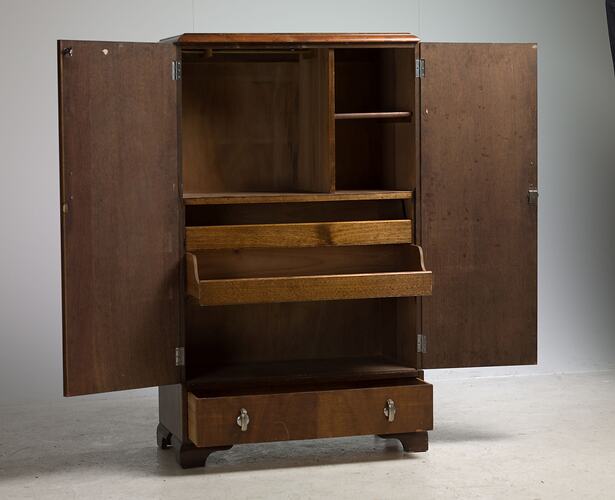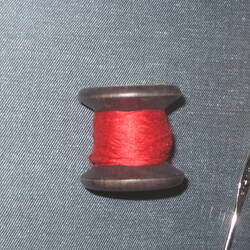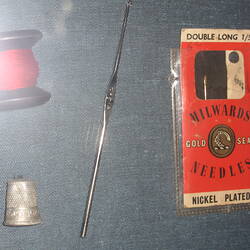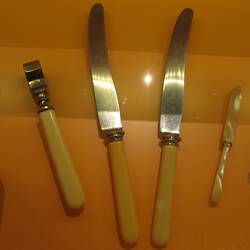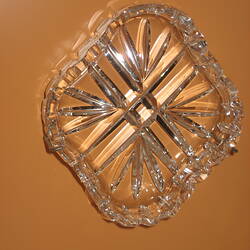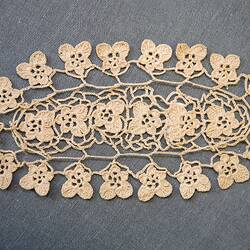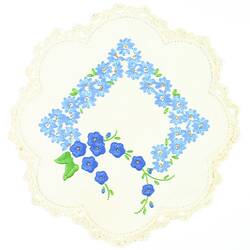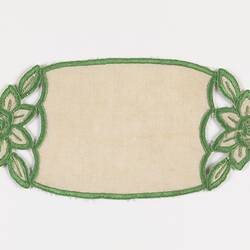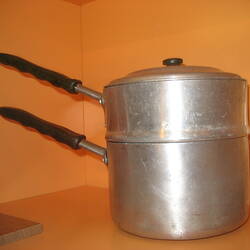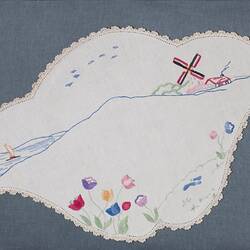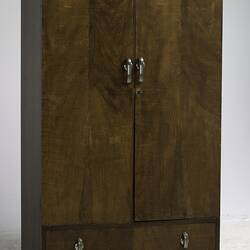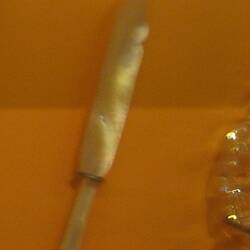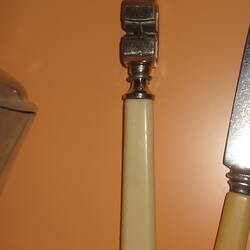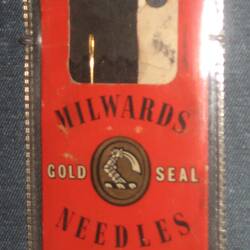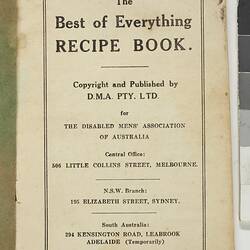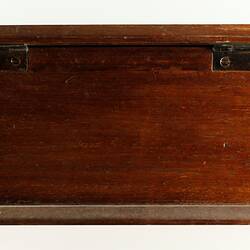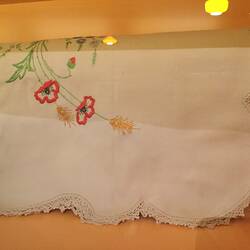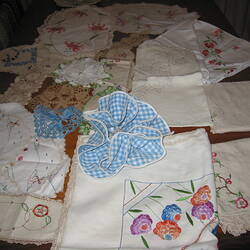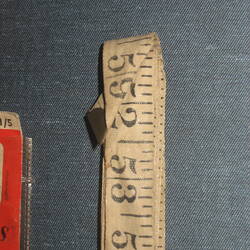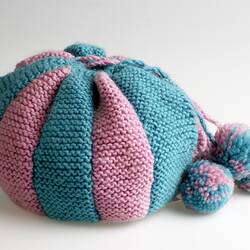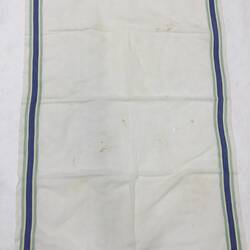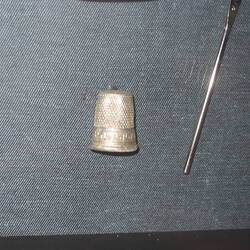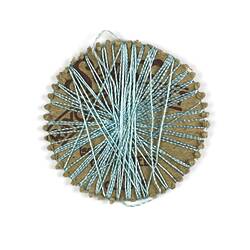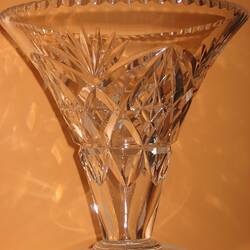Kath Davis, nee Hayes, was born in 1921 in the eastern regional Victorian town of Bairnsdale. She and her family moved to the south-eastern regional Victorian town of Traralgon. She completed a commercial book keeping course, then worked in a garage for five and a half years before moving to a bank in Traralgon for three years. Kath married in 1944. Kath was given a glory box purchased by a boyfriend. When he requested its return she purchased her own in a similar wardrobe-style. It was timber veneer, with two doors, shelves at the top and a series of drawers and bottom cupboard doors. Kath was accomplished at needlecraft and she embroidered a large quantity of beautiful domestic textiles for her glory box. She also purchased kitchenware, crystal and other dometic goods for her collection, which she completed just before consumer goods became scarce during the restrictions of World War II.
Kath's story is fascinating for the dual experiences of male and female control and possession. She states: 'The first box I had, I'd been collecting things but just putting them in a cupboard, but then this boyfriend I had, which was an on and off affair for about five years. At one stage, I don't even remember him proposing, but we got round to talking about marriage.and his uncle had a furniture shop and he bought me this magnificent glory box which was magnificent in those days. And so I had somewhere to put my things. ...I liked it very much and as the years went on the romance faded and he asked me for the glory box back...I gave it back to him and I thought well, if this is the way things go I'll buy my own and then I'll have it. So I went to town and I bought one, an identical one, so that's how I came to get my glory box. (Kath Davis interviews 1992 & 2003)
For Kath the container was just as significant as the collection, highly prized and enjoyed: 'It was a glory box because it had compartments in it and trays and shelves and a big drawer at the bottom.wood veneer, divided into four sections, the top was two compartments , with one big shelf for all sorts of things and then there were two trays which I used for embroidery and linen and stuff like that. Then there was a space lower down. It had two big doors that opened out and then right at the bottom was a big drawer which I suppose would have been for blankets and things like that. [Kath Davis interview 2003]
Kath was influenced to focus on luxury items by the experience of her own mother who had so little. Consequently, Kath focused on the 'good' things like crystal, accumulating lots of it, so she could use and enjoy it. She recalls: '.while everyone seemed to be buying linen and necessary things for their glory box, I had different ideas because I thought if you got married, you would have to have linen and sheets and tablecloths etc, but I wanted something nice, so I went in for crystal and china and cutlery and things like that.which I'm very glad I did because when I got married I couldn't have afforded the crystal anyway.so it worked out well in my case.' (Kath Davis interview 2003)
Kath started collecting when she was about 17, at the time when she started work, had an income and a boyfriend. She states she was not thinking about getting married at the time and that she would have started collecting with or without the boyfriend. 'Marriage was way in the distance, it wasn't anything in the near future, it was just in case you got married you had to have a glory box.' (Kath Davis interview 2003) Kath did most of her collecting before the War in the late thirties and in a large country town like Traralgon there was adequate choice in the stores. She recalls: 'I considered myself lucky because I got most of my things before things became scarce. In the first year or so during the War you could still get things but then gradually they became harder to get. And by that time I'd got everything I wanted.' (Kath Davis 2003)
Kath used her collection over the years and kept everything. The needlework acquired by Museum Victoria represents about 25% of the total fancywork she produced and purchased.
References
Kath Davis, oral history interviews 1992, 2003 and 2006, Museum Victoria collection
Dr Moya McFadzean 'Glory Boxes: Femininity, Domestic Consumption and Material Culture in Australia, 1930-1960' (PhD Thesis, University of Melbourne, 2009)
More Information
-
Keywords
-
Authors
-
Article types
